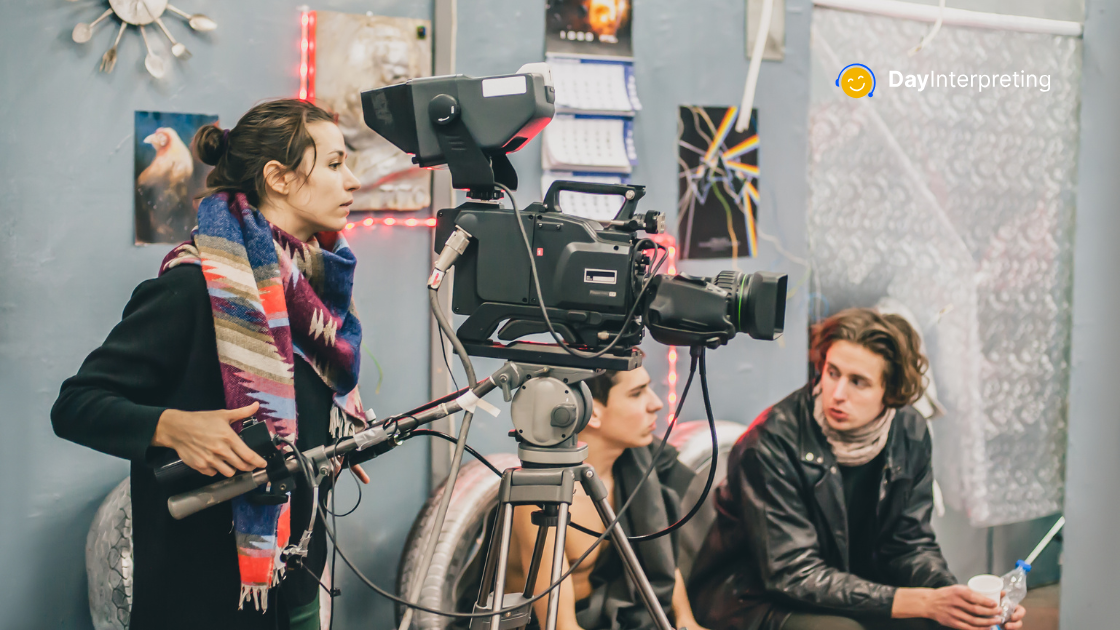titling and The film industry is one of the world’s largest sectors. What works on the big screen in Hollywood often needs to be adapted for audiences around the world. But language services in the film industry isn’t as simple as swapping words from one language to another. It’s a complex process that involves translation, cultural adaptation, and audio-visual translation (AVT) services, all of which ensure that films not only reach but also resonate with international audiences.
The Art of Translation in the Film Industry
When a film crosses language barriers, the translation process begins. But this is more than just subtitling or dubbing. The goal is to preserve the original meaning and tone of the film while ensuring that the translated version flows naturally in the target language.
Take, for example, animated films. The character voices are often culturally specific, and jokes may not land in other languages due to cultural differences. In these cases, professional translators work to adapt the script, changing jokes or references so that they are more relevant to the new audience.
One famous example is the 2009 film Up. In its English version, the character Dug the dog says, “I have just met you, and I love you.” In the Spanish version, however, this was translated to, “You are my best friend,” which better suited the context of the story and was more natural for Spanish speakers.
Dubbing vs. Subtitling in the Film Industry
Subtitling and dubbing are the two most common methods of translating films. Dubbing involves replacing the original voice track with a translated version, while subtitling displays the translation as text on the screen.
Dubbing is often preferred in countries like France and Italy, where viewers are accustomed to watching films with voices in their own language. However, subtitling remains popular in regions like Scandinavia, where audiences generally prefer to hear the original voices, maintaining the authenticity of the performance while reading the translation.
Each method has its pros and cons. Dubbing can sometimes result in lip-sync issues, while subtitles can be distracting for viewers. The choice between the two depends on the target audience and the film’s context.
The Role of AVT in Global Film Distribution
Audio-visual translation (AVT) is a growing field within the film industry. It covers not just translation, but also voice-over, subtitling, and the synchronization of all these elements to maintain the integrity of the film’s visual and emotional impact.
AVT professionals must consider cultural sensitivities when translating films. This is especially important when translating humour, colloquial expressions, or culturally-specific references. A phrase that is funny in one language may need to be reworded completely to make sense in another.
Case Studies of Poor Translation
When translation goes wrong, the impact can be significant. In the 2006 film The Pink Panther, a scene where Steve Martin’s character says, “I am like a tiger,” was translated into French as, “I am like a cat.” The translation wasn’t just inaccurate; it was also a missed opportunity to showcase the character’s boldness. Similarly, in the 2002 film Lost in Translation, the title itself exemplifies the complexities of translating ideas and emotions across cultures.
Wrapping Up on Language Services in the Film Industry
Language services in the film industry is an art form that requires more than just linguistic skill—it demands cultural sensitivity, technical expertise, and a deep understanding of the medium. Language services are crucial to making sure that films maintain their integrity when they cross borders. Whether it’s subtitling, dubbing, or adapting scripts for new audiences, language professionals play a pivotal role in ensuring that films connect with global viewers, one translation at a time.





0 Comments